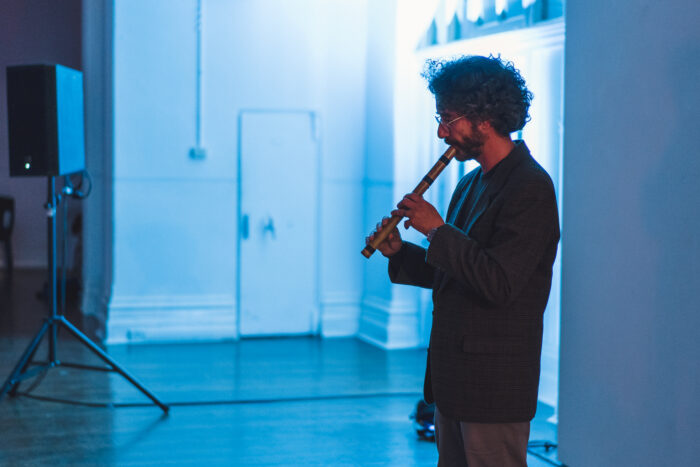For a couple of years now, I’ve been reconnecting with musical traditions and practices from South America, integrating them in new creative projects. One of them was a performance commissioned by Tone List for their Audible Edge 2022 festival in Walyalup (Fremantle, Western Australia). Below is a conversation I had with Josten Myburgh last September, discussing this project and where it came from (re-posted from the festival’s website, where you can find lots of other interesting interviews).
JM: You’ll be performing a solo for quena and bass drum on September 16 [2022] at An Ocean of Ears. Can you tell us about the ideas you’re exploring in this piece?
PA: The Quena is an Andean bamboo flute that appeared in my life when I was a teenager, but only recently I’ve been paying more attention to, thanks to a generous Chilean musician based in Perth who gifted me one that he made himself (thank you Gabriel ‘Peteco’ Segovia!). In this piece/performance for An Ocean of Ears I’ll be developing musically what comes out naturally out of two extremely simple instruments [a Quena and a bass drum]. Mind you, in my first years composing I was into live electronics, with all the technological complexities that that entailed. Now I like to see this practice as a way of cleaning up what is not strictly necessary for me to make music, being left just with what’s essential.

JM: How does working on a piece for a resonant space like the Old Customs House inform the way you make music?
PA: I’ve always been sensitive to the relation between sound and space. This perhaps comes from having studied in depth the work of Luigi Nono, and that tradition of sound spatialisation that can be historically traced to the Renaissance. It has to do with the importance of listening: whatever sound you make will be experienced very differently in different spaces. I already had a chance to experiment with the Quena at the Old Customs House in Walyalup a few months ago, in an Outcome Unknown concert. That experience now informs my desire to take further the possibilities that that space offers.
JM: Recently you’ve been making your own instruments. What changes about your way of making music when you’re playing an instrument you’ve designed yourself?
PA: My first memories of being actively interested in making music involved precarious attempts to make rudimentary instruments (during most of my childhood we couldn’t afford ‘real’ instruments). The Quena is an extremely simple instrument, just a piece of bamboo with some holes on it. The ones I’ve been making lately are quite imperfect, but that aligns surprisingly well with my quest for a sound that is more complex, more interesting than the kind of clean, in-tune ‘philharmonic’ sound that I was taught to look for in the several instruments I was trained in. Some people call these kinds of sounds ‘extended techniques’, but to me that name only makes sense when you approach sound from the extremely narrow perspective of the conservatory, that’s to say, from a Eurocentric point of view. It’s just what comes naturally out of a piece of wood! At Audible Edge I’ll be performing a Quena that I’ve recently made, with some specific characteristics for what I want to present there.

JM: You’ve indicated in recent texts on ADSR Zine and social media that your practice and perspective on music has been shifting quite a bit in recent years, towards centring Andean music, presence in the moment, instrument-making, and approaches that hybridise composer and performer (feel free to correct me if any of those aren’t right). Working on an instrument and approach for a commission, rather than writing a score, is one thing you mentioned as being something relatively new. I’d love to hear about how this shift has felt for you, and where you see it taking you next.
PA: It’s all a very personal process of shifting perspectives. In a way I’m trying to integrate the many interests that have occupied me throughout my life into something more cohesive that makes sense to me. Trying to make sense of who I am. All the many crises that we’re experiencing in the world can’t leave our perspectives untouched. For me it’s an inevitable reckoning with what’s really important to me, letting go of all that’s not essential.
JM: What are three pieces of music, or experiences, that are inspiring or motivating you at the moment?
PA: Tough one. I’ll give you three musicians that I find myself listening to a lot: Violeta Parra, Mercedes Sosa, and Soledad Bravo. I’m also listening to lots of Bolivian Neo-folklore these days, Andean classics from the 60’s and 70’s.
[Photo credits: Cover photo by Josh Wells / Workshop photos by Loren Holmes.]
